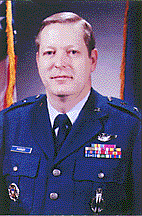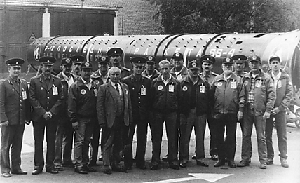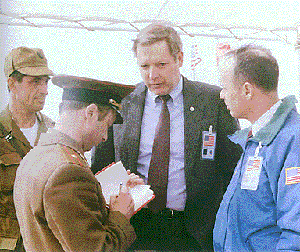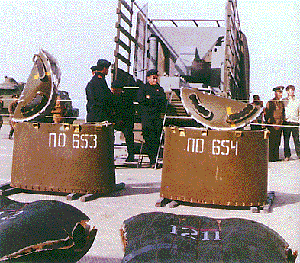| Speaking
for the Soviet Union, General Medvedev predicted that the
next major arms control treaty--the START Treaty, then in
the final negotiating stages--would build upon the
precedents established under the INF Treaty. "The
tracks are already made," he concluded.17 General
Parker, the OSIA director, focused his remarks on the
work of the on-site inspectors: "Nearly three years ago, on the first of July 1988, the first U.S. inspectors landed in Moscow to begin the implementation of this treaty. Sixteen days later a group of Soviet inspectors arrived here at Longhorn, Texas to conduct a baseline inventory of Pershing treaty-limited items. . . . For the past 35 months, this process of inspector visits to sites halfway around the world has repeated itself over 600 times. Twenty-nine teams of Soviet inspectors came to Marshall, Texas, primarily to participate intimately in the INF countdown, to attest to their government that indeed the United States was eliminating these missile systems as promised.... Please remember that what we are witnessing is not just the passing of this noble weapon system, but also an important milestone in an historic agreement between the two most powerful nations on earth."18 The Soviet Union's INF Treaty eliminations began at Kapustin Yar Missile Test Complex on July 22, 1988, with the elimination of an SS-20 missile.19 Less than 10 days later, on August 1, the Soviets destroyed their first SS-12s at Saryozek.20 In contrast to the United States, which used a static firing method, the Soviet Union eliminated the INF missiles at Kapustin Yar and Saryozek by explosion. By the end of the baseline inspection period on August 31, the Soviet government had begun eliminations at seven of its eight designated sites.21 The reason for this concentrated activity had to do with the larger number of missiles the Soviet Union had to eliminate. Not only were they obligated by the treaty to destroy 1,000 more missiles than the United States (1,846 to 846), but they had to eliminate more than 900 shorter-range missiles within the first 18 months. At the Soviet elimination sites--Kansk, Chita, Kapustin Yar, Saryozek, Lesnaya, Stan'kovo, Sarny, and Jelgava--they destroyed the following missiles during the first two treaty years. U.S. on-site inspectors observed each elimination. |
|



